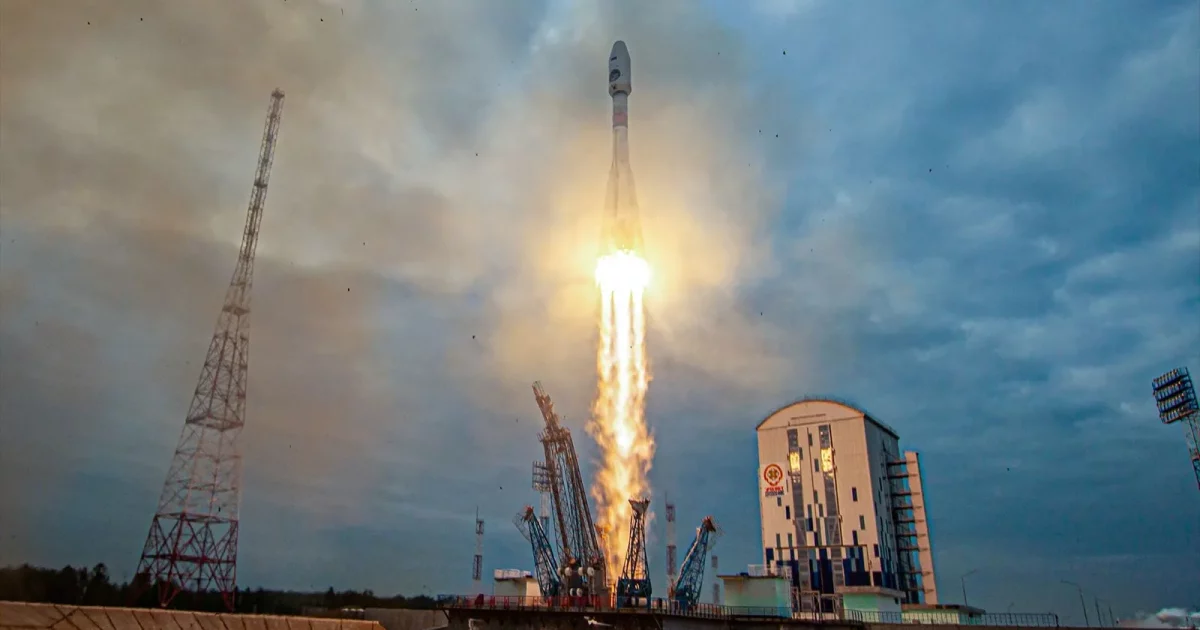
In the realm of space research, Russia has set its sights on a groundbreaking endeavor: the discovery of water ice in the lunar south pole’s perpetually shadowed craters. Over the course of approximately fifty years, Russia has meticulously built a network of esteemed scientists and research institutions within this region, nestled around valuable reservoirs of frozen water.
Russia’s lunar exploration pursuit is fueled by enthusiasm, as it comes on the heels of India’s Chandrayaan-3 lunar lander launch and the United States’ and China’s covert focus on the moon’s southern pole for advanced lunar exploration programs. This international race underscores the significance of this celestial region.
The recent launch, originating from the Vostochny Cosmodrome some 3,450 miles (5,550 kilometers) away from Moscow, commenced its journey to the moon. At 2:11 AM local time on a Friday, Soyuz 2.1 rocket propelled the Luna-25 spacecraft towards its lunar destination. About an hour later, the lander separated from Earth’s orbit and was deftly maneuvered under the experienced control of Roscosmos, Russia’s esteemed space agency.
According to Yuri Borisov, the head of Roscosmos, the anticipated lunar landing is slated for August 21, with a potential alternative date on August 23. Borisov expressed optimism, stating, “Now we are looking forward to the 21st. I hope that there will be an extremely accurate soft landing on the Moon. We hope to be first.”
Luna-25, a compact car-sized rover, is prepared to embark on a year-long mission on the moon’s southern pole. The presence of water ice discovered in its deep craters has ignited fervor among scientists worldwide. The prospect of utilizing these ice deposits for fuel extraction, oxygen production, and future lunar habitation holds immense potential.
Russia’s lunar ambitions also hold geopolitical importance, particularly in light of the Ukrainian conflict. The moonshot project serves as a testament to Russia’s steadfast commitment to maintaining its sovereign foothold in lunar exploration, especially since the disruption of space relations following Ukraine’s annexation in February 2022.
Maxim Litvak, the scientist leading the instruments on Luna-25, highlights the mission’s primary goals: to touch down where no human has before and to study the sources of water on the lunar surface. Litvak emphasizes the significance of “searching for signs of water ice in the landing area of Luna-25,” which strengthens the mission’s groundbreaking research capabilities.
Roscosmos expects the lunar journey to last around five days. After a successful landing at one of the three potential sites, the spacecraft will take approximately 5-7 days to orient itself and adjust its trajectory for a circumnavigation around the moon. This timeline is reminiscent of Russia’s previous moonshot endeavors, which includes the successful Luna-2 mission in 1959 and Luna-9’s pioneering soft landing in 1966.
As Russia steps into the 21st century with renewed lunar aspirations, it’s clear that the moon’s water-ice presence has captivated astronomers worldwide. Even though it’s a harsh environment, NASA’s 2018 lunar map shows signs of water ice in the shaded regions. This was confirmed in 2020, adding credence to the possibility of utilizing this resource for future lunar missions.
With global powers like the United States, China, India, Japan, and the European Union investing in lunar exploration, Russia’s Chandrayaan-style quest stands as a testament to its commitment. Notably, this endeavor is carried out under the backdrop of a collaborative spirit. As Borisov outlined, “There is a plan to continue with the following three lunar missions over the next seven years. We are also discussing joint efforts with China.”
In this arena where space exploration was once beyond reach, Russia’s Chandrayaan-style expedition marks both scientific progress and national pride. As Luna-25 paints its footprint on the lunar surface, humanity takes a new breath in a realm once untouched.



